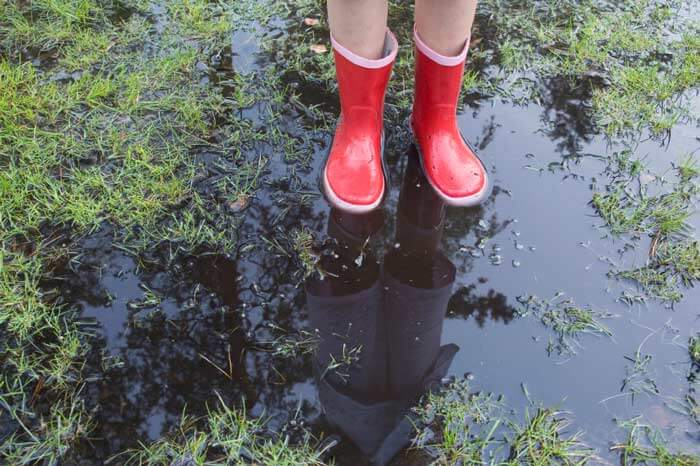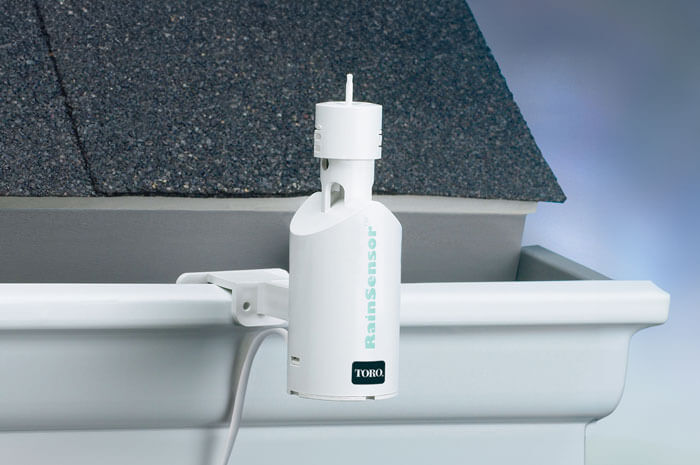
If you’re interested in having lush, green grass, it may be tempting to run your sprinklers all the time. Some people water quite frequently with no second thoughts. Others wonder, “Can I overwater my lawn?”
The answer is yes, you can overwater grass. It’s best to water in moderation, giving your grass the water it needs, but no more. By sticking to a more moderate approach, you’ll avoid the troubles of overwatering your lawn.
What is Overwatered Grass?
Overwatered lawns can actually be quite problematic. Overwatering grass prevents strong, effective roots from forming, since water is found so abundantly at the surface level. An excess of water can also saturate tiny underground air pockets, removing critical oxygen from the soil. These issues can cause your grass to start yellowing over time.
Other common signs of overwatering include water runoff, a noticeable uptick of weeds or mushrooms, soft, spongy ground and a thick accumulation of thatch. While a thin layer of thatch is actually good for your lawn, an abundance of moisture can inhibit the organisms that break down thatch to keep it at a healthy level.
Benefits of Moderate Watering
Dialing back your sprinkler use can be beneficial in a number of ways. Not only will your grass be healthier with more established roots, but it’ll save you money on your utility bill — while conserving precious water. More and more cities are recognizing the importance of water conservation, putting restrictions on lawn watering.
So, how do you ensure that you’re not overwatering? Start by assessing your lawn.
Determine How Much Water Your Lawn Needs
To determine the appropriate amount of water for your grass, consider the depth of your lawn roots, your soil penetrability, local weather, and irrigation method.
Depth of Lawn Roots
By determining how deep your lawn roots are, you can actually become more efficient at watering your grass. You’ll be able to moisten your root zone entirely, without having excess water seep down below it.
Your root depth depends on the type of grass you have, in addition to your soil conditions. The more accommodating your soil is, the better it can support healthy root growth. Some grasses, such as Tall Fescues, have roots that can extend down as far as one foot deep. Other grasses have roots that can only reach half that depth, in even the best conditions. To see how deep your grass roots are, follow these steps:
- Use a shovel to remove several random samples from around the yard.
- Average out the root lengths, adding an inch to the average root depth to arrive at a target watering depth.
As your grass develops deeper roots, adjust your watering depth target to encourage roots to go deeper.
Soil Penetrability
Once you’ve determined how deep your roots are, it’s time to measure how much water you need to moisten your soil to the target root zone. Wait for a dry spell of four-to-five days, then set out some empty cans (six ounce tuna cans work well) in various locations throughout the lawn. Run your sprinkler or in-ground sprinkler system and record the amount of time it takes until the cans fill with one inch of water.
After you’ve run your sprinklers and filled your cans, wait a day for the water to penetrate the soil, then check its depth. If your soil is moistened beyond the root depth, you’ll need to reduce your watering time. If the moisture hasn’t reached your root depth, you’ll need to increase your watering time. Let the soil dry before making adjustments as necessary, repeating the experiment until you’ve found the ideal amount of water for your lawn.
Weather
To avoid over or underwatering, you’ll want to take your weather conditions into consideration. If it rains during the week, subtract the amount of rainfall from the water you’re putting down. If it’s hot and sunny — or even windy — you’ll have to increase your watering time and frequency.
Irrigation Method: The Best Approach to Watering Grass
The best approach to watering grass (and most other plants) is to follow nature’s pattern of rainy periods followed by brief dry spells. Apply enough water at once to penetrate the roots, let the soil come close to drying out, and apply water again.
A good rule of thumb for most grasses is to water one to two inches per week. If you have porous soil that drains quickly, you may have to apply one inch of water twice per week. If your soil retains water well, applying one-and-a-half to two inches once per week might be enough.
Water Your Lawn With Confidence
So, now that you’ve learned about measuring the depth of your lawn roots, soil penetrability, weather compensation and irrigation methods, you’re ready to find the ideal amount of water to put down on your lawn!
Do you have more questions about irrigation and lawn care? Check out Toro’s Help Center for information, videos, maintenance tips and more!



